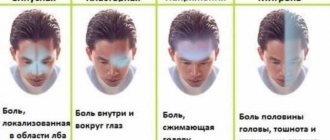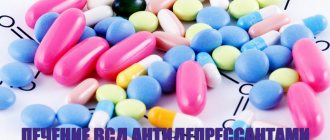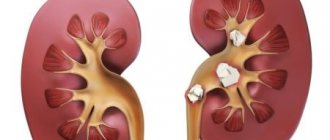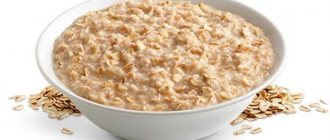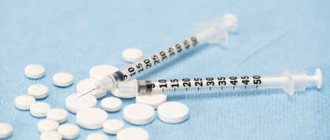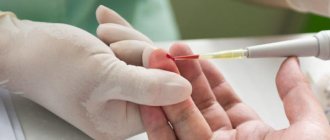Danger of VSD
Vegetovascular dystonia is a functional disease that occurs due to an imbalance between the two branches of the autonomic nervous system. It manifests itself as a whole complex of symptoms that make you feel worse. The severity of the clinical picture is sometimes serious. People panic because:
- increased heart rate;
- blood pressure surges;
- severe headache;
- numbness of the limbs, lips, tongue;
- interruptions in heart function.
Anxiety progresses. A panic attack occurs.
Dysfunction of the autonomic nervous system is not life-threatening. However, the consequences of VSD cause many problems.
Symptoms of VSD do not lead to disturbances in the functioning of organs, but to anxious thoughts and anticipation of an attack. They cause the patient's condition to worsen. Such people should not occupy positions that require heavy physical or mental stress. Manifestations of VSD can occur suddenly and cause an accident.
Symptoms of vegetative-vascular dystonia (VSD)
The symptoms of vegetative-vascular dystonia are very diverse and differ in one direction or another depending on the cause, as well as the organ or system in which this disorder occurred. Thus, according to the same criteria, the VSD group included the following syndromes with their own characteristic features.
Parasympathicotonia (Vagotonia)
Vagotonia, or the vagus nerve, is characterized by the following symptoms: depression, increased fatigue, sleep disorders (insomnia or excessive sleepiness), memory impairment, decreased performance, apathy, fearfulness, abdominal pain, appetite disturbances, nausea, feeling unwell in a stuffy room or in the cold, dizziness, leg pain, acrocyanosis, increased sweating, frequent urination, constipation, transient swelling under the eyes and allergic reactions.
From the cardiovascular system, the following symptoms were noted: pain in the heart area, low blood pressure (80/50 mm Hg), bradyarrhythmia, muffled heart tone (pulse up to 45-50 beats/min), increased heart size.
Read also Scabies - description, symptoms, prevention and treatment of scabies
Sympathicotonia
Sympathicotonia is characterized by the following symptoms: paleness of the skin, chills, increased blood pressure, tachycardia, anxiety (feelings of fear and anxiety), short temper, inattention, increased sensitivity to pain, mydriasis, polyuria, constipation.
Neurocirculatory dystonia (NCD)
Neurocirculatory dystonia is divided into three types: cardiac, vascular and mixed, each of which is characterized by its own symptoms.
Cardiac type of NCD (functional cardiopathy): disturbances of the rhythm and conduction of the heart (sinus bradycardia, tachycardia, extrasystole, atrioventricular block of the I-II degree), some forms of mitral valve prolapse and disturbances in the processes of ventricular repolarization.
Vascular type of NCD: arterial hypertension (hypertension) and arterial hypotension (hypotension).
Mixed type of NCD: a combination of symptoms of cardiac and vascular types.
Other signs of autonomic dysfunction
Cardiovascular syndrome is characterized by the following symptoms: heart rhythm disturbances (bradycardia, tachycardia, extrasystole), paleness of the skin, constant changes in blood pressure, various types of discomfort or pain in the heart area that does not go away when taking nitroglycerin.
Hyperventilation syndrome is characterized by the following symptoms: a feeling of suffocation, lack of air, as if it is difficult to take a deep breath, muscle spasms, dizziness, sensory disturbances in the limbs and perioral area.
Irritable bowel syndrome is characterized by: pain in the lower abdomen, flatulence (bloating), frequent urge to defecate, pain or discomfort in the pit of the stomach, appetite disturbances, nausea and vomiting, dysphagia.
Cystalgia is a painful urge to urinate and the act itself, while urine tests do not show the presence of any diseases;
Impaired sweating , especially increased sweating is observed on the soles of the feet and palms;
Sexual disorders , which are characterized in women by vaginismus and anorgasmia, in men by erectile dysfunction and ejaculation;
Violation of thermoregulation , which is characterized by daily temperature changes, from normal to a slight increase (up to 37.5°C), and slight chills.
Vegetative crises
Under the influence of unfavorable factors - overwork (mental and physical), acute infectious diseases, stress and others, which we will talk about a little later, a person can be attacked by various kinds of vegetative crises - panic attacks, vegetative storms, paroxysms. They can occur both short-term and long-term, up to several days. Let's consider the most common vegetative crises.
Sympathoadrenal crisis. It is characterized by the following symptoms: headache, increased blood pressure (up to 150/90-180/110 mmHg), rapid pulse (up to 110-140 beats/min), increased excitability, numbness of the extremities with a feeling of coldness in them, pain in the heart area, frequent urination, polyuria, dry mouth, sometimes elevated body temperature (up to 38-40°C).
Vagoinsular crisis. It is characterized by the following symptoms: sudden pallor of the skin, increased sweating, decreased blood pressure and body temperature, abdominal pain, flatulence, nausea and vomiting. Sometimes angioedema may develop. Attacks of suffocation, pain in the heart area, syncope, and migraine are also possible.
Important Features
It is possible to live with vegetative-vascular dystonia. People suffer from dysfunction of the autonomic nervous system for years, decades without concomitant diseases. Adequate therapy greatly improves the well-being of patients. If you maintain your health and prevent complications in a timely manner, then you don’t need to be afraid of VSD.
To reduce the risk, VSD should be differentiated from the following diseases and conditions:
- Coronary heart disease (CHD). The main danger is myocardial infarction.
- Hypertonic disease. Hypertensive crises closely resemble classic panic attacks.
- Pathology of the respiratory system. Frequent shortness of breath and a feeling of lack of air force doctors to look for organic pathology.
- Epileptic seizures. Paroxysm of nocturnal dystonia is sometimes accompanied by convulsions.
Those suffering from panic attacks are prone to neuroses. As the next crisis develops, they worry even more, and this forms a vicious circle. The functioning of the ANS occurs and the condition worsens. To normalize well-being, sometimes a person just needs to calm down. In other situations, it is impossible to do without specialized medications.
Vegetative-vascular dystonia in itself is not dangerous, since it is one of the secondary functional disorders. It is enough to eliminate the root cause to eliminate the disease.
Treatment of vegetative-vascular dystonia (VSD)
Treatment of vegetative-vascular dystonia is a rather lengthy and painstaking task.
A positive prognosis largely depends on correct diagnosis and accurate determination of the cause of VSD. Treatment of VSD is carried out comprehensively and includes the following points:
- Normalization of daily routine, sleep, rest;
- Elimination of physical inactivity using dosed physical activity (PT);
- Therapeutic massage and water procedures;
- Balneotherapy (treatment with mineral waters);
- Phototherapy;
- Limiting sources of emotional experiences - computer games, TV shows;
- Counseling and family psychological correction;
- Normalization of nutrition (regular consumption of food enriched with vitamins);
- Electrophoresis;
- Drug therapy.
Read also Stomach ulcer - symptoms, causes, diet and treatment of stomach ulcers
Work/rest mode
Each person’s body has its own specific “charge”, which depends on many factors. When the strength runs out, but a person continues to overload his body with physical or mental work, the body begins to weaken, thereby being subject to various imbalances in the functioning of certain systems. The same thing happens if a person does not give the body enough time to rest. Therefore, to maintain health, it is very important that a person maintains a work/rest schedule. Work in moderation, rest and be sure to get enough sleep.
Physical inactivity or sedentary lifestyle
A sedentary lifestyle leads to weakening of the muscle tissue of certain organs that are least involved in a person’s daily life. In addition, physical inactivity increases the risk of developing various diseases of the cardiovascular system. “Movement is life”, this is a fair saying. The more a person moves, the better the blood “plays”, thereby improving blood circulation, the organs receive with the blood the nutrition necessary for their normal functioning in the form of oxygen and various substances.
Therapeutic massage and water treatments
Physical effects on the body, in particular therapeutic massage and water procedures, improve blood circulation, improve the functioning of the lymphatic system, if necessary, restore the structure of the spine (in the case of osteochondrosis), and along with the spine, the nerve channels with the vessels that pass through it are aligned. In addition, massage allows you to relax, relieve stress, and improve muscle tone. All these actions have a beneficial effect not only on the functioning of the central nervous system, but can also improve the overall health of a person.
Sources of emotional experiences
The modern number of media, as well as ways to obtain this information, is only growing from year to year. Today, few people will be surprised by a smartphone with the ability to get information from the Internet, a computer, a laptop, or a TV. But the whole problem lies in the quality of the information received. If you make a short review of at least posters for certain modern computer games, some cartoons, movies, news, then you can highlight the overall picture - murder, violence, cruelty, lies, wars, the occult, etc. All this has an extremely negative impact on the developing psyche of the child, and on many people as well. Bad dreams, selfishness, disrespectful attitude towards other people are just the tip of the iceberg. The basis is emotional instability, imbalance, uncertainty about the future, panic fears. If you are a parent and have not yet studied the flow of information that feeds your child, this is the time to start doing so. Protect your child from the negative flow of information from the Internet and other sources. This is a very important point not only from a therapeutic VSD point of view, but also as a preventive measure against other complex diseases that usually manifest themselves in an adult.
Family psychological correction
This measure is necessary if your family experiences frequent conflicts and difficulties raising a child. Remember, quarrels and scandals have a negative impact on the mental development of a child. Do not allow a showdown in front of the children. Children should grow up in a loving family where each member respects each other. In this way, a person is cultivated who will follow your family model, and it is better for the family to be happy.
Nutrition
For the normal functioning of any human organ or system, various vitamins and minerals are required. Each vitamin is involved not only in the functioning of the entire body, but also in the development of all organs and regulation of their vital functions.
Some of the vitamins are produced in the required quantities by the body itself, but basically, we can only get vitamins from the food we eat. If a person gets used to eating fast food, sandwiches, chips, beer and other low-health foods, he does not receive the required amount of vitamins, because These foods simply don’t contain them. It's tasty, perhaps, but it's certainly not healthy. Moreover, such junk food is harmful to human health. It is also extremely important to eat at least 3 times a day. Food is a kind of “energy” that is necessary for a person to perform various daily tasks. There is no food, or it is incomplete, there is no strength for work, and of course, human health.
Give preference to foods rich in vitamins and minerals - vegetables, fruits, herbs, cereals. Try not to fry foods, but to steam or boil them. The less you heat treat your food, the more vitamins and microelements they will retain. Human beauty and health largely depend on human nutrition.
Electrophoresis
For vagotonia, electrophoresis with caffeine, calcium, and mesatone is prescribed. For sympathicotonia, electrophoresis with magnesium, papaverine, bromine, aminophylline is prescribed.
Drug therapy
Drug therapy is usually used in the following cases:
- Non-drug therapy did not bring the desired result;
- To relieve various kinds of symptoms that make it difficult to perform daily tasks;
- For the treatment of various chronic diseases that may be factors determining the development of VSD.
Medicines for VSD:
Sedatives. They have a beneficial effect on the nervous system and calm. Among the sedatives widely used: preparations based on valerian, hawthorn, St. John's wort, motherwort - "Novopassit", "Persen", "Stressplant", herbal tea with lemon balm.
Tranquilizers (anxiolytic drugs). Used to relieve attacks of fear, stress, and anxiety. Among the tranquilizers you can find Relanium and Tranxen.
Antidepressants. They are used to relieve feelings of depression, depression, apathy, anxiety, irritability, emotional stress, as well as to increase mental activity. In addition, antidepressants are used in cases where a patient with VSD constantly feels aches and pains throughout the body (in the heart, gastrointestinal tract, muscles and joints), which are not amenable to symptomatic treatment. Antidepressants include: Amitriptyline, Imipramine, Clomipramine, Coaxil, Prozac, Cipramil.
Read also Keratitis - symptoms, causes, types and treatment of keratitis
Nootropics. They are used to improve mental activity, brain resistance to various stressful situations, and improve the energy state of neurons. Among the nootropics we can highlight: “Pyritinol”, “Piracetam”, “Phenibut”.
To normalize peripheral and cerebral circulation, as well as blood microcirculation, the following are used : Cinnarizine, vinpocetine (Cavinton), pentoxifylline (Trental), nicotinic acid (vitamin B3 or PP).
For sympathicotonia and pain in the heart area, beta-blockers are used - propranolol (Anaprilin, Obzidan), Atenolol (Atenol, Tenormin).
To relieve heart pain, the following is used: Verapamil (“Verapamil”, “Isoptin”), “Valocordin”, valerian tincture.
With vagotonic reactions. Psychostimulants of plant origin are used - preparations based on Schisandra, Eleutherococcus, Zamanikha, etc.
For intracranial hypertension (high blood pressure), dehydration therapy is used, which is aimed at removing excess water from the body. Diuretics are used for these purposes.
In combination, glycine, glutamic acid, pantogam, and complexes of vitamins and microelements have proven beneficial in the treatment of VSD.
For constipation, you need to add food with plenty of fiber, fresh vegetables and fruits to your diet. It is also allowed to take laxatives: Duphalac, Lavacol, Normaze.
With frequent diarrhea , the amount of fiber consumed in food must be reduced. Additionally, you can take an antidiarrheal agent: loperamide (Imodium, Lopedium), sorbents (Polifepan, Smecta).
At elevated temperatures, you can take: “Pirroxan”, “Phentolamine”.
In case of increased sweating , the skin can be treated with solutions of formaldehyde, potassium permanganate (potassium permanganate), tannic acid.
In case of venous insufficiency - if the patient has noise in the head and throbbing pain in it, heaviness in the head, you can take: "Vasoket", "Detralex". Medicines for venous insufficiency are taken for 1-2 months.
For dizziness due to high blood pressure, drugs that improve cerebral circulation are used - Vinpocetine, Cavinton, Nicerium, Oxybral.
For severe headaches and dizziness, you can take Betaserc.
Important! During treatment for VSD, be sure to give up bad habits - smoking, drinking alcoholic beverages, taking drugs.
Forecast
With timely detection, accurate diagnosis and strict adherence to the doctor’s instructions for the treatment of VSD, the prognosis for recovery is favorable. In case of VSD, it is very important to correctly carry out psychological adjustment of the child, so that after he grows up, the mental deviations formed during VSD do not accompany him throughout his life.
Is it possible to die from VSD?
With VSD&, a sympathoadrenal crisis often occurs. It is accompanied by pronounced fear for one's own life. Due to discomfort in the heart, a feeling of lack of air, and loss of consciousness, the patient thinks that he will not survive.
Death does not occur due to autonomic dysfunction. The manifestations of this disease have not yet led to the death of anyone. The life-threatening consequences of attacks of dystonia:
- Car crashes. When a dystonic person is driving and has a sudden headache and loses consciousness, there is a risk of disaster.
- Progression of the underlying pathology - if it is not treated, then death occurs because of it, and not because of VSD. For example, dystonia, which develops against the background of coronary artery disease, aggravates the condition of coronary blood flow, and myocardial infarction develops. The cause of death in this case is the development of cardiogenic shock, ventricular fibrillation and flutter, asystole, and cardiac rupture. None of these dangerous and fatal complications develop with “pure” dystonia.
- Injuries. Vagoinsular crisis often accompanies VSD. It is characterized by possible fainting and loss of consciousness. No one is immune from falling with a head injury, brain hemorrhage, or other serious injury resulting in death. But even a completely healthy person can fall to his death.
People die not from dystonia, but from complications of concomitant diseases or their consequences. The life expectancy of a person diagnosed with VSD is the same as that of healthy people. The main thing is to monitor your health and consult a doctor in a timely manner.
Vegetative-vascular dystonia is not fatal. Adequate control over the nervous system and comprehensive treatment of the underlying disease allows you to forget about the problem forever.
Consequences and complications of VSD
Some complications of dystonia are quite dangerous. They are classified taking into account the affected part of the autonomic system. The first complication that is mentioned most often is a panic attack. It begins with a sharp increase in heart rate, headache, accompanied by anxiety or fear. May disturb the heart, chills, perspiration, disruption of the gastrointestinal tract. Tremors and pressure surges are detected. Such a crisis ends suddenly, just as it began. After it, the patient feels tired and overwhelmed.
The next complication of VSD is vagoinsular crisis, characterized by the release of insulin, which reduces blood sugar levels. At the same time, the gastrointestinal tract is actively working, the pulse slows down, and the pressure drops. The patient feels weak and sweats.
The third type of complication in VSD is a mixed crisis, in which symptoms of the two conditions described above appear. The duration of crises can last from 10 minutes to an hour, taking into account which they are divided into mild, moderate and severe.
The consequences of vascular dystonia, if left untreated, are quite unpleasant. In children, the consequences can manifest themselves in the form of psychosomatic pathologies. They are not corrected even in adults; they manifest themselves as poor adaptation in society and an inability to concentrate on work or study.
Possible consequences of VSD
If you do not treat the symptoms of the disease, do not change your lifestyle and do not take medications prescribed by your doctor, then there is a high risk of complications:
- worsening of impaired cerebral circulation;
- pain in the tissues of internal organs (while there may not be any diseases of these organs as such);
- intercostal neuralgia;
- asthenia, anhedonia, hypochondria and other psychological manifestations of VSD will worsen;
- anxiety-depressive disorder;
- obsessive-compulsive disorder;
- obesity;
- problems and diseases associated with deterioration of venous tone.
Causes and symptoms of the disease
If measures are not taken to treat this disease, the patient faces serious negative health consequences.
Enter your pressure
Move the sliders
120
on
80
Dystonia develops as a result of psychoemotional disorders that develop in a person. Diseases of the endocrine, cardiovascular, and digestive systems, as well as various injuries and damage to the brain or spine also play a role. Symptoms of VSD are:
- state of weakness;
- fast fatiguability;
- headache;
- fainting;
- blood pressure surges;
- state of apathy and irritability.
Hypnotherapy for VSD symptoms
Hypnotherapy shows amazing results for VSD symptoms. However, there are few truly good specialists in our country. This year a document was released that requires hypnotherapy sessions to be conducted only by those people who have a license and proper education. As a rule, psychotherapists do this. Thus, the effectiveness of hypnotherapy and its right to be used on an equal basis with the methods of classical psychotherapy have been confirmed at the official level.
Patients who have completed a course of sessions with a competent hypnologist note a decrease in the severity of symptoms. Very often, even psychosomatic pain passes without a trace. How can hypnosis affect the interaction of parts of the nervous system, what effect does it have on VSD? The fact is that the nervous system is very closely connected with the psyche; by influencing one link, you can improve the functioning of another.
Factors that contribute to the occurrence of the disease
Vegetative-vascular dystonia, in addition to natural causes, can occur due to the body’s predisposition to such diseases.
It can be noted that quite often this manifests itself in those who:
- has a family member who suffered from VSD. NS diseases, unfortunately, can often be inherited. If the child’s parents (or one of them) were too susceptible to various irritants in their youth, prone to phobias, or experienced constant fear, the child may also have similar symptoms;
- has diseases of the endocrine glands. People with diseases of the gonads, thyroid gland, and adrenal glands have a high risk of contracting the disease in question;
- has org. brain damage. Patients who previously had tumors and brain injuries, strokes close to death, are quite vulnerable to vegetative-vascular dystonia;
- undergoes a stage of endocrine restructuring of the body. Vegetative-vascular dystonia quite often occurs in a person during that period of life when not only the restructuring of the nervous system occurs, but also hormonal changes occur.
The relationship between chronic stress and symptoms of VSD
Chronic fatigue, stress, depressive and anxiety disorders, chronic alcoholism - all this causes enormous harm to the body, especially if these diseases are not treated. Brain biochemistry is disrupted. If the patient tries to take psychotropic drugs himself or “drown” the problems with alcohol, the condition only gets worse. Almost certainly such a person suffers from VSD to one degree or another.
If the cause of the appearance of certain symptoms of VSD is chronic stress, then it is necessary to get rid of it. In particular, to eradicate those causes and change life circumstances that led to the appearance of chronic stress. As a rule, this is enough for the manifestations of VSD to soften.
Neurological and somatic pathologies as a cause of VSD
In neurology there is such a thing as psychovegetative syndromes. This is an abnormal activation of autonomic effects that provokes an imbalance in the interaction of the sympathetic and parasympathetic departments.
The main condition for the appearance of psychovegetative syndrome is the presence of pain due to a particular pathology. For example, pain in the heart area is interpreted by the patient as a threat to life, mechanisms of stress appear, and cortisol is produced. As a result, the patient fixes all his attention on the negative symptom, which leads to more pronounced manifestations, as well as to the appearance of new symptoms.

